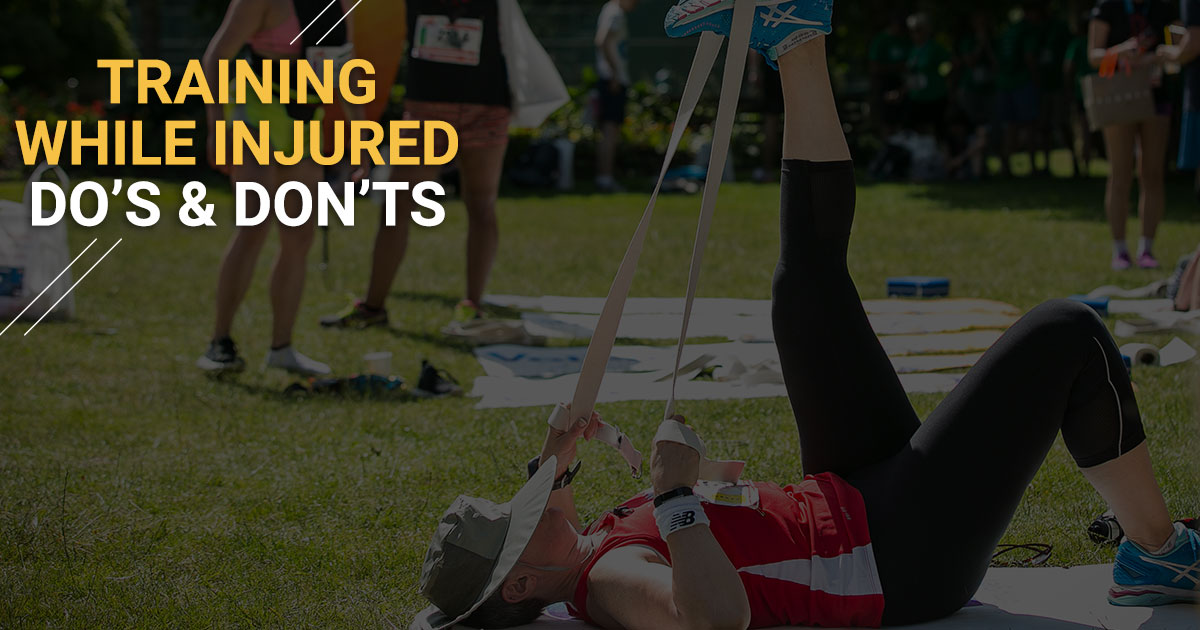
Runner’s are notorious for training through injury. No matter how much this may be revered, doing this can do more damage than good. The “no pain, no gain” mentality is a mindset many athlete’s have, but is a detrimental one. There are times that training through discomfort is okay, like dealing with delayed onset muscle soreness from a previous workout. However, when the discomfort is actually painful, it’s worth second guessing your decision to train. Many injuries start with a little niggle that gets pushed aside and trained through. By not giving it a chance to heal, that niggle can escalate into pain, and then into a full-blown injury.
This is where listening to your body, and seeking professional helps comes in. Getting injured doesn’t mean you’re sidelined from everything as there are many other cross-training activities that can help to maintain fitness. Learning to train around an injury will not only help you to recover faster, it’ll keep your mind at ease.
See a doctor or sport-related practitioner to diagnose the problem, and use your own common sense and grit to keep training sensibly. These are some of the most common mistakes of training with an injury, and how to avoid it from happening to you:
MISTAKE: “No pain, no gain.”
FIX: Listen to your body.
Our bodies are incredibly resilient and are able to downplay a lot of things. We have nerve endings in our body that sense pain called nociceptors. Depending on the area of the body that’s affected, pain that may feel intense in one area, may feel minimal somewhere else. However, when any kind of pain is felt, it usually hurts for a reason and is a good indication that something is wrong. The “no pain, no gain” mentality is a recipe for disaster. When people push through these signals and continue doing the activity that causes pain, it’s not surprising that damage occurs.
So instead of trying to act like a hero, take time off from the painful activity. This will allow any damage to remain minimal and heal more efficiently. If the pain is significant or doesn’t improve after a few days of rest, consult a doctor or physiotherapist to assess the injury and determine the root cause.
MISTAKE: Consulting Dr. Google.
FIX: Consult a human professional.
Having the world’s knowledge at our fingertips can be a dangerous resource when trying to diagnose an injury. What may be the signs and symptoms of a minor muscle strain, could look like the tell-tale signs of some rare incurable disease. Unless you personally have a background in human anatomy and sports injuries, it’s best to leave the diagnosing up to the professionals.
Seek out a doctor, physiotherapist, chiropractor, or RMT who has experience with athletes and will understand your desire to get back to training as soon as possible. Not only will they help to identify the problem, they’ll give a reasonable timeline, and be more understanding in their return to health plan. Incorporating cross-training alternatives and maintenance exercises to prevent the injury from happening again, sport-specific practitioners will have you back in the game in a timely fashion.
MISTAKE: Thinking absolute rest is the answer.
FIX: Cross-train.
It’s normal to think that resting an injury is going to help it heal faster. The issue is when people rest completely, and cease any and all activity. Unless you’ve been told by a practitioner to do nothing, there will be other activities that won’t cause any pain or do further damage. Exercise, in any shape or form, helps your body recover. People’s cardiovascular health, metabolism and immune system are all influenced by exercise in a positive way.
So instead of becoming a couch potato when you’re injured, try different cross-training activities and use your extra time to do tedious physio exercises that will stave off any other injuries. Modify workouts but adjusting the intensity, only working non-injured muscles, and avoid anything that causes pain. You’ll be able to maintain fitness, gain overall strength, and keep sane during a time where you’re unable to run.
MISTAKE: Starting where you left off.
FIX: Ease back into it.
Being injured is bad enough, but it’s even harder when you’re allowed to run again but have restrictions on what you can do. Trying to jump right back into training at the level you were at pre-injury, can set you back again. While that fitness level might be the most fresh in your mind, it doesn’t mean your body is ready to do it. Start back slowly and conservatively. Avoid speedwork and hills for the first stage of recovery; don’t run on back-to-back days until you can run and have no pain before, during, or after; and increase your mileage by 10% per week. Keeping these guidelines in mind will lessen the chance of reinjury.
Don’t give up! An injury is annoying and frustrating to deal with, but it doesn’t mean you’ll never be able to run again. Seek out help, be patient, and rekindle your love for other activities; it’ll make the recovery time go by much faster!







